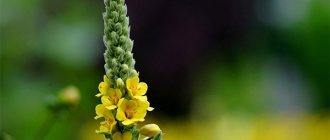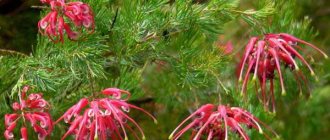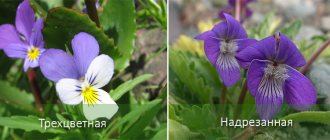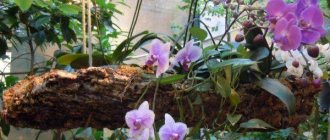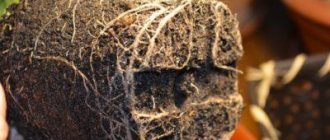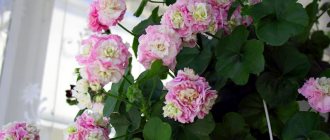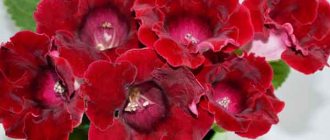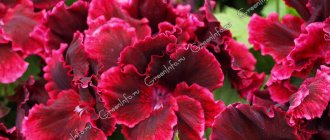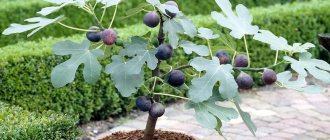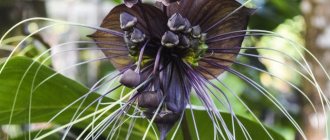Royal scepter mullein, which is easy to grow, has a large number of useful properties. In addition to the medicinal effect, the composition of verbascum in combination with salvia will become a real decoration of the flowerbed.
Following the rules regarding caring for mullein will allow you to grow healthy plants that will delight you with lush flowering all summer long.
Description and characteristics
Mullein is an amazing garden plant that delights with gorgeous flowering throughout the summer. Charming flowers located on tall peduncles do not last long, but the alternate opening of the buds promotes continuous flowering. The plant is popularly called as golden flower, archer, royal scepter, verbascum. Despite its simplicity, the flower will fit into any garden design.
Mullein belongs to the category of biennial plants, growing up to 200 cm in height. The outlines of the culture are similar to the scepter. Small yellow flowers, the diameter of which barely reaches 1.5 cm, are densely located on the upper parts of the stems. Alternate blooming of flowers begins from the middle region of the stems. You can admire the blooms throughout the summer.
Verbascum foliage is located horizontally above the ground surface. The leaf blades are quite wide. The two-year-old crop has a powerful root system.
Often, mullein can be found on the side of the road, in the yard, in fields and forest areas. People often use the plant for medicinal purposes.
“Royal scepter” – decorative mullein
For its large candle inflorescences of bright yellow color, mullein is called the “Royal scepter”, “golden flower”, “torch grass”.
Surely you have seen this spectacular plant in front gardens and vast meadows. Modern garden forms are much larger than wild ones and delight with a variety of colors. Do you want to succeed in phytodesign and decorate your garden without much hassle? Then feel free to get down to business and plant goldenflower seeds.
Growing mullein is a pleasure, you just need to know how to properly care for it. In this article we will look at all the nuances of care, from sowing seeds to propagation and prolongation of flowering.
Kinds
There are more than 240 varieties of mullein, but in our country you can find only 6-8 varieties of the plant. These species can adapt perfectly to our climate. Below are the types of verbascum found in our latitudes.
- Scepter-shaped (dense-flowered) mullein. The height of the decorative crop reaches 20-110 cm. Thick, erect stems are densely covered with leaf blades. The oval-shaped lower foliage reaches 15-35 cm in length. The upper leaf blades are much smaller. Their length does not exceed 10 cm. Long spike-shaped inflorescences are dotted with bunches of flowers, painted in a yellow palette. The inflorescences resemble a golden royal scepter. Each of the corollas reaches 5 cm in width. Fresh flowers have an amazing subtle aroma. Dried inflorescences have a pronounced honey smell.
- Common mullein (bear's ear). Any part of the culture is densely pubescent with long silvery fibers. The foliage is dark green. Leaf blades are concentrated along the entire length of the shoots. At the very top of the shoot there is a short inflorescence shaped like a spikelet. The length of the lower petiole foliage reaches 16-30 cm. The size of the green mass in the upper part of the stem is much smaller. From a distance, the foliage shrinking upward resembles the outline of a cone. A large number of small flowers form an inflorescence. The diameter of small flowers barely reaches 1.5-2 cm.
- Black mullein, whose height reaches 55-115 cm, is distinguished by erect stems. Large leaves are concentrated below in the third part of the shoot. The lower petiolate foliage is ovoid or heart-shaped. The length of the leaf plates reaches 20 cm. Long inflorescences are covered with bunches of small yellow flowers. Near the base of the petals, the presence of brown spots can be noted. Purple fibers decorate the columns of stamens.
- Medicinal mullein. Each of the stems, the height of which can exceed 120-140 cm, is densely covered with leaf blades. Long inflorescences located in the upper region of the stems branch into several shoots. Each part of the perennial is covered with thick felt fibers. The length of the oval leaves exceeds 15-20 cm. The flower petals are long and soft to the touch. Flowers are collected in groups along the entire length of the inflorescences. The anthers are painted in bright red tones.
- Hybrid mullein is a decorative species that breeders obtained through interspecific crossing. Large flowers are painted in various shades. The height of the shoots, depending on the variety, can reach 50-170 cm. Among the best hybrid species of verbascum, it is worth highlighting Mont Blanc, Pink Domino, Jackie and Herry Helen.
Mullein densely flowered
Mullein densely flowered (Verbascum densiflorum, syn. V. thapsiforme) is a rosette woolly-tomentose plant 1.2-1.5 m high and up to 60 cm wide; in the south - semi-evergreen. He comes from Europe, Russia (from Siberia).
Mullein densely flowered
Rosette leaves up to 45 cm long, oblong to elliptical, with grayish-yellow pubescence, wavy along the edge. The flowers are yellow, sometimes white, up to 5 cm in diameter, collected in a spike-shaped branched inflorescence 60-90 cm long. It blooms from the second year of life in June - August. Fruits are capsules; ripen in August - October.
Growing from seeds at home
The plant does not belong to the category of capricious ones. Abundant flowering throughout the summer is a definite advantage. The presence of a taproot system allows mullein to obtain moisture from the depths. The presence of pubescence on the leaf blades reduces moisture evaporation. The plant can grow both in a sunny area and in a shaded area.
When choosing a place for planting, it is worth considering that verbascum will not delight with lush flowering on loamy soil. In order to propagate a crop, you need to use seeds. Small seeds are sown in open ground at the end of spring, when the threat of night frosts has passed. The seeds are distributed over the bed and lightly sprinkled with a small layer of soil. After the emergence of seedlings, it is necessary to thin them out, leaving only strong and healthy specimens. The distance between plants should reach 20-25 cm.
Seedlings need abundant, systematic soil moisture. A year after planting, the plants will begin to bloom. When replanting a biennial tree, it is important not to separate the lump of soil from the root system, which will allow the plant to quickly adapt to the new location. The perennial reproduces well by self-sowing.
Note! From seed collected from one plant, descendants with different flower colors grow.
When watering, it is worth considering that verbascum does not like waterlogged soil. Therefore, water is added under the mullein gradually as it is absorbed into the soil. To extend the life of the biennial, cut the stems as soon as the flowers begin to dry out. There is no need to wait until the fruits begin to ripen. Frequent application of fertilizers to fertile soil shortens the lifespan of flowers.
Features of care
In order for the plant to bloom for a long time, it is necessary to follow the recommendations of experienced agronomists regarding the care of biennials. Below are the main features of care.
- Feeding. Before sowing verbascum seeds, it is necessary to add a small percentage of mineral fertilizer to the soil. After applying fertilizer, it is recommended to loosen the soil. For adult mullein, organic and mineral fertilizer is suitable as a top dressing. Fertilizing is applied to the root zone area.
- Weeding is a necessary item for caring for mullein. The medicinal plant needs systematic loosening of the soil. Weeds take away useful elements and soil and create additional shading, which negatively affects the development of young seedlings.
- Mulching will have a positive effect on the appearance of mullein. By sprinkling the soil with sawdust, you can get rid of weeds, saturate the soil with useful elements, and maintain soil moisture for a long time. Verbascum is fragrant in such conditions.
- Removal of flowers is carried out in stages as they wither. This process allows you to slow down the flowering process of the remaining buds and prevent the strength from being drawn out of the plant. After the crop has flowered, the stems are also cut, dried and used as mulch.
- Preparing mullein for winter. It is necessary to prepare plants for cold weather in October. The biennial root system is sprinkled with a layer of sawdust, peat, ash and fallen leaves. The bedding layer should reach 7-10 cm.
Reproduction
For the purpose of propagation, the seed method or the method of dividing the bush can be used. Seed material remains viable for a long time. The seeds can be sown immediately in open ground, as mullein is resistant to frost. In fields, biennials reproduce by self-sowing. The first shoots appear after 10 days. The first months the seedlings grow slowly. With proper care, the growth rate increases from 9-10 weeks.
To preserve varietal characteristics, it is necessary to use the method of dividing the bush. The process is performed in September, when flowering has come to an end. The plant along with the root is dug up and shaken off the earthen clod. The root is cut into 2-3 parts, so that buds remain on each of them. The length of each root should be within 5-6 cm. Each division is placed in separate holes. A small layer of sand is poured over the root with the bud. Only after this can the hole be filled with soil. The distance between the holes should not be less than 35 cm.
Diseases and pests
Mullein is most often harmed by aphids and fungal infections. In order to cope with the pest, you should use drugs of the following type:
- Aktars;
- Anti-mite Max;
- Decisa;
- Inta-Vira;
- Golden spark;
- Calypso Spray;
- Fitoverma;
- Tanreka;
- Tsvetoluxa.
It is very important to accurately follow the dosage of medications. As soon as signs of aphids are detected on the plant, treatment should begin as soon as possible.
Note! When spraying flowers, it is unacceptable to get the solution on edible plants growing nearby, since harvesting in this case will need to be postponed for a month.
If a fungal infection is detected on flowers, the plantings should be sprayed with Fitosporin-M or Topaz as soon as possible. Fungicidal agents will help quickly cope with the disease.
Preparation of medicinal raw materials
It is very important to follow the rules for collecting and drying medicinal raw materials. If during storage the yellow tint of the flowers changes to gray-brown, most of the beneficial properties of mullein can be considered lost. Flowers are collected in the morning, at 8-9 o'clock, when the sun has not yet reached full strength, but has already dried the dew. Neither rainy nor cloudy weather is suitable for collecting raw materials. Even yesterday's rain can cause excess moisture, which will lead to rotting.
Drying is done in a well-ventilated place, after which the product is stored in a glass container with a ground-in lid. Paper and fabric are not suitable for this, since dried raw materials tend to absorb moisture from the air and deteriorate. Only the corollas and stamens of flowers are collected, leaving the calyxes, because they degrade the quality of collection.
It should be borne in mind that the yield of the finished medicinal product is very low, no more than 10% of the weight of the collected material.
Medicinal properties of the plant
Mullein has medicinal properties, so it is used quite often during therapy:
- skin pathologies;
- gastrointestinal infections;
- hemorrhoids;
- pathologies of the oral cavity;
- asthma and sore throats;
- cardiovascular diseases.
The royal scepter affects the human body as an effective sedative, expectorant, and diuretic. Very often, pharmaceutical companies include the plant in their preparations.
In folk medicine, tinctures, decoctions, oils and ointments made on the basis of verbascum are actively used. It is worth considering that during the preparation of decoctions and infusions, the stamens of the plant are first removed, which avoids irritation of the skin and mucous membrane.
Contraindications
Despite the beneficial properties of the plant, it should be used very carefully by women carrying a child. During lactation, mullein should not be used.
There are cases when the royal scepter provokes the development of an allergic reaction. Therefore, before starting use, it is important to test the composition in a small amount on the skin. If there are no unpleasant sensations or redness after 100-120 minutes, you can safely use the folk remedy.
Scepter mullein
This herbaceous plant is notable for its height, reaching in some cases up to three meters. Its tall stem in its lower part is framed by large and wide leaves, and in the upper part there are flowers of scepter-shaped mullein. Usually, this plant is called the royal scepter or mullein, although among the common people it also has a number of other names, which include densely flowered mullein, medicinal mullein, common mullein or bear's ears. Scepter-shaped mullein can grow both in forests and in fields and meadows, and it especially likes sandy soils.
It received one of its names, bear ears, not because this plant is bearish or loved by them, but because of the shape of its wide and large leaves, which look somewhat reminiscent of bear ears.
Royal scepter mullein - cultivation and collection
Despite the fact that it usually grows in the wild, it can also be grown in summer cottages. However, certain rules must be followed. This plant, which has such a majestic name as royal scepter mullein, must be grown in conditions that are comfortable for it. The mullein plant prefers to grow individually or at a short distance from other plants.
It is worth paying attention to the fact that all its parts have healing qualities. However, the flower itself is of greatest value. The remaining parts of the plant are used in more rare cases. At the same time, the collection of flowers occurs over several days. This is due to the fact that the flowers covering its trunk open on different days. Mullein root is the least commonly collected root due to its weak medicinal qualities. The collected mullein grass is dried in the shade or in special dryers. Next, the dried common mullein is sorted into tightly closed jars, in which it is stored for two years. At the same time, it is worth remembering that by saving common mullein in jars, we thereby preserve the essential oils that are part of the tops of this plant.
Chemical composition
Common mullein contains the following substances:
- glucose (this substance helps normalize the functioning of the body and at the same time is a source of energy);
- mucus (acting as an excellent enveloping and expectorant);
- saponins (these nitrogen-free organic compounds act as an expectorant, diuretic and antiulcer agent);
- flavonoids (normalize the functioning of the central nervous system);
- essential oil (normalizes the functioning of the cardiovascular system);
- gum (normalizes stomach function);
- carotene (acts as a stimulant for the immune system);
- organic acids (having anti-inflammatory and antiseptic qualities);
- tannins (anti-inflammatory);
- alkaloids (painkillers);
- a number of microelements (potassium, magnesium and others).
Medicinal properties
Mullein densely flowered has a number of medicinal qualities, among which it is especially worth noting its anti-inflammatory and diuretic qualities. In addition to these properties, bear ears are a good expectorant and wound healing agent. This plant is very useful for colds.
Application in landscape design
Blooming spikelets of an ornamental crop attract the attention of even the most experienced gardener. Landscape designers use mullein for planting in small groups on the lawn. Verbascum is also actively used in decorating flower beds where bulbous perennials are planted. Mullein goes perfectly with salvia, anafalis, stachys, catnip, and orchis.
Luchinnik is an effective medicinal plant that not only benefits the human body, but also decorates the design of the local area. An unpretentious culture that can become a decoration for any flower bed.
Watch a video about these beautiful flowers:
Why is consulting a doctor important?
Inflammation of hemorrhoids is a serious disease that requires careful complex therapy. In some cases, even surgical intervention may be necessary. Therefore, if you suspect hemorrhoids, you should immediately contact a specialist without delaying the visit. The proctologist will diagnose the disease, determine the stage of hemorrhoids, and recommend suitable medications.
Pregnant women should be especially careful, because they should not use most medications so as not to harm the health of the unborn child. Only an experienced doctor will be able to select the optimal therapy.
You can learn about what modern methods of treating hemorrhoids traditional medicine offers by reading the article by our expert.
When does verbascum bloom?
Flowering, or the burning of such a small “candle” occurs from June to August, that is, it lasts almost the entire season.
During this period, the stem is covered almost half of its top with rows of buds, which alternately bloom for one day and fade in the evening. The next day, new buds bloom, and so a long continuous flowering is formed. The flowers are relatively small for such an impressive plant, the colors of the petals are white, violet, yellow, purple, lilac and pink. When the ataman grass completely fades, its stem dies, but the main greenery still remains fresh for some time.
